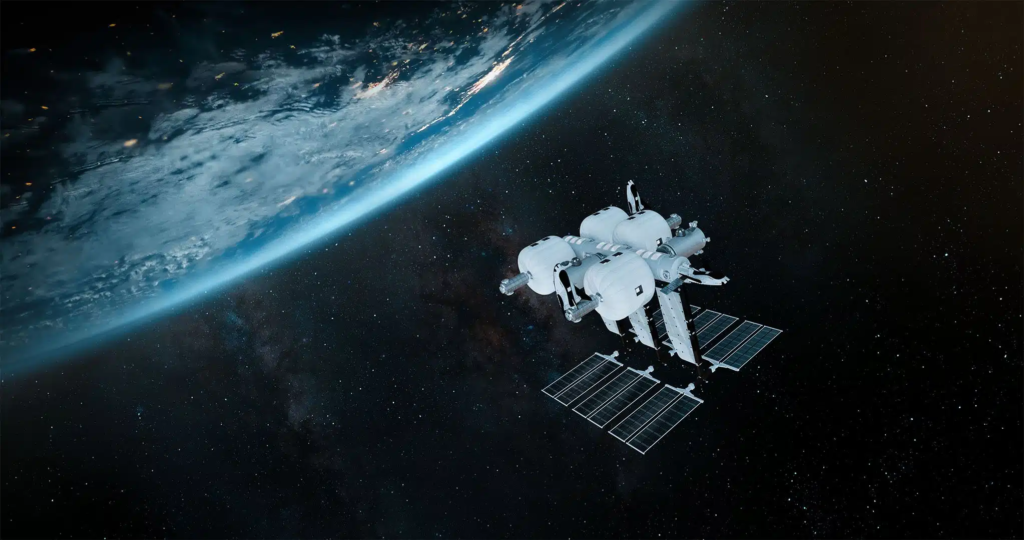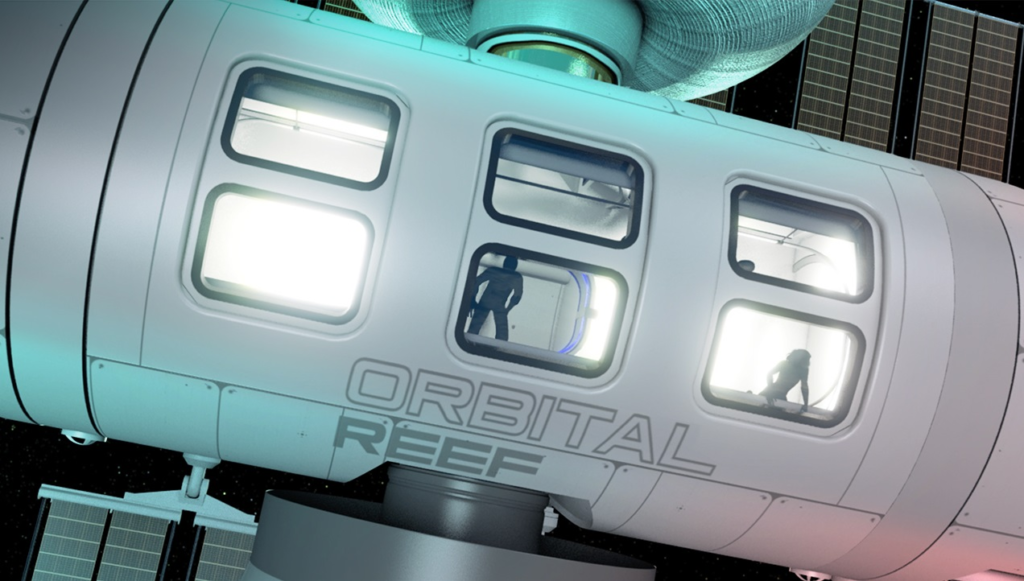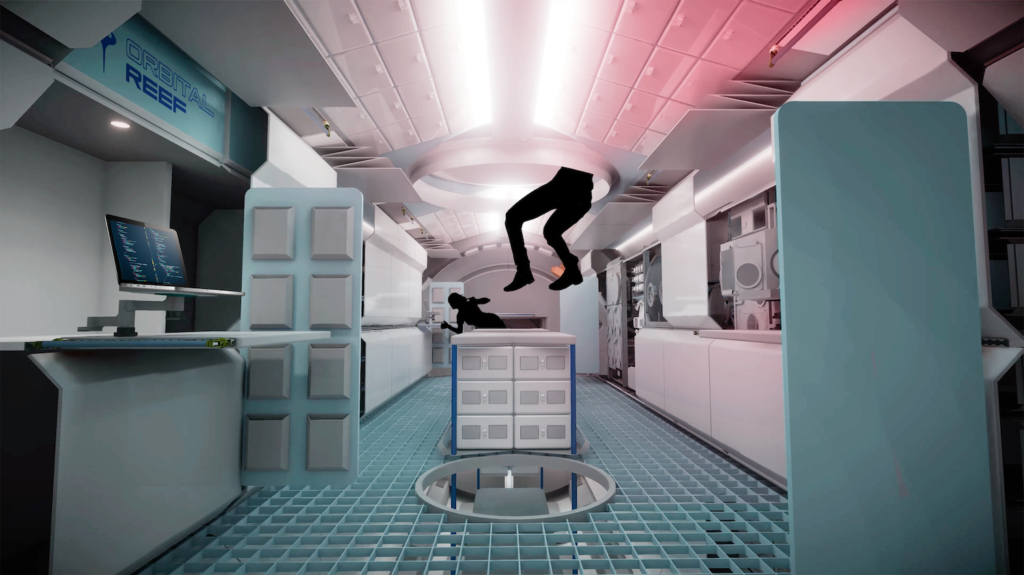
The Orbital Reef Space Station Is Making Physical Progress
By the end of this decade, the number of operational space stations in low Earth orbit is expected to soar as a host of companies work on private options. What was once a space dominated by large space agencies will become a primarily commercial environment. One of the groups working toward this goal is Blue Origin and Sierra Space, partners on the Orbital Reef space station.
Since being announced a few years ago in 2021, for the most part, the only updates we had received since then had to do with general development, design review, etc. Recent updates however suggest that physical work is underway in a few different areas. This would mark a significant milestone for the project which has an ambitious timeline laid out.
Each company involved has a set number of projects that they are expected to complete. The recent physical progress mostly has to do with Blue Origin and the large main modules that they’re responsible for. Here I will go more in-depth into Orbital Reef’s physical progress, what they still need to complete, the future launch timeline, and more.
Physical Progress

The Orbital Reef station will be made up of both large diameter core modules and some inflatable modules as well. For a while now there has been physical progress on the inflatable modules provided by Sierra Space. Called LIFE or large integrated flexible environment, these habitats have undergone quite a bit of pressure testing with NASA to ensure their safety. By now the company is getting close to full-scale tests and eventually, sending test units into low Earth orbit.
While exciting, the core Orbital Reef modules are just as if not more important, and an aspect we’ve heard very little about since the start of the project. The only things we knew were that they were going to be quite big requiring a large launch vehicle fariing, and that Blue Origin was responsible for developing and manufacturing them. That was until very recently when we got a few new updates on the project. Specifically, a few days ago on the 3rd, when covering comments from a NASA safety panel member, Michael Sheetz tweeted saying, “Sirangelo: @blueorigin has two milestones coming up for Orbital Reef, including a core structural test.” While brief, this gives us more insight into exactly what work is being done and even the overall schedule of the project.
Looking at the official Orbital Reef Space Station NASA Agreement document, it features a long list of objectives including timeframes when they are meant to be completed. Core Structural Tests is milestone 7, and was meant to be completed in March 2023. With it being August, a 5 month delay is not ideal but it’s not bad either. The test itself verifies that the design, manufacturing, and assembly of the Core element primary structure meets requirements with adequate margin. The core structural test supports validation of the structural models and analytical tools used for the core element structural design.
It’s important to point out however that the test still needs to take place and obviously the results could be both good and bad. Depending on how the test article holds up will determine whether there will be more delays or the company will move on to the next objective. Interestingly, the next milestone is a big one and is set to happen not long from now. Milestone 9, the Premliminary Design Review is scheduled for October 2023 in just a few months. Realistically the program is a few months behind based on the structural testing so this milestone will likely get completed closer to early 2024.
Either way, the PDR demonstrates that the preliminary design meets Orbital Reef requirements with acceptable cost, schedule, and risk. Key products will be distributed for formal feedback around four weeks prior to PDR, with a minimum of two weeks allocated for review of major products. The PDR will summarize each major product and the results of each review. Within three business days after conclusion of the review, the review board will summarize review findings and determine and document any review item discrepancies (RID) or requests for action (RFA). RIDs will require disposition and closeout as approved by the review board. RFAs will be treated as suggestions by the review board that may or may not be reacted to by the program. An important part of this space station’s future development.
Sending Test Units To Space

In addition to physical progress on the core station modules, Blue Origin is preparing to test another part of this system. A few days ago, the director of research development at Blue Origin, during an ISSRDC presentation commented that research will be a major focus of Orbital Reef, along with tourism, manufacturing and other applications. “We’re deep in the design phase right now,” she said, including examining both the ability to support existing research facilities on the ISS and developing next-generation research capabilities.
On August 1st, Northrop Grumman successfully launched its 19th resupply mission (NG-19) to the International Space Station (ISS) under NASA’s Commercial Resupply Services-2 (CRS-2) contract aboard the company’s Antares rocket. This mission directly supports work on Orbital Reef. Samples of the material Blue Origin plans to use for large windows in the station’s core module are going to the station on the Cygnus for an external experiment platform called the Materials ISS Experiment (MISSE) Flight Facility. “It will do some materials testing for us,” she said, including how the window material handles the temperature and radiation environment of space, “validating some of our ideas there.”
Back in 2021, Blue Origin and Sierra Space were selected by NASA for a funded Space Act Agreement for collaboration to design a commercially owned and operated space station in low Earth orbit (LEO). NASA’s Commercial LEO Development program aims to shift NASA’s research and exploration activities in LEO to commercial space stations, helping stimulate a growing space economy before the International Space Station is retired. The Orbital Reef team includes Boeing, Redwire Space, Genesis Engineering Solutions, and Arizona State University.
Not long after this announcement in early 2022, the first milestone was checked off when they successfully completed the Systems Requirements Review (SRR). The SRR was an important program milestone marking the baselining of the requirements for the mission and design of Orbital Reef. The SRR reviewed Orbital Reef specifications to ensure they reflected the current knowledge of the mission and market requirements to serve as a stable baseline to proceed with development. The review assessed Orbital Reef’s ability to meet safety and mission requirements and evaluated the technical readiness of the design, the concept of operations, the feasibility of project development plans, and planned verification activities. Representatives from Blue Origin, Sierra Space, team members, and NASA participated in the review.
They then managed to complete the SDR for the station. The SDR included an extensive review to ensure that the proposed Orbital Reef architecture is responsive to the functional and performance requirements; it examined the proposed system architecture and the flowdown to all functional elements of the Orbital Reef system. The successful SDR supported NASA’s decision to further develop the system architecture and design. At the time, Brent Sherwood, Senior Vice President of Advanced Development Programs at Blue Origin said, “This SDR moves Orbital Reef forward. We are meeting the needs of both the commercial marketplace and NASA’s requirements. Orbital Reef will change the game for human space flight in Earth orbit.”
“We are on the doorstep of the most profound industrial revolution in human history. An industrial revolution marked by the transition from the last 60 years of space exploration to a future where humanity extends our factories and cities into space. It isn’t solely about tourism – it is about unlocking the next great discoveries using the microgravity factories that we will build just 250 miles above the Earth’s surface,” said Tom Vice, CEO of Sierra Space. “The microgravity factories and services provided by Orbital Reef have the potential to revolutionize every industry and become a major growth contributor to the U.S. and world economies.”
In the grand scheme of things, Orbital Reef is trying to open the next chapter of human space exploration and development by facilitating the growth of a vibrant ecosystem and business model for the future. Designed to open multiple new markets in space, Orbital Reef is hoping to provide anyone with the opportunity to establish their own address in orbit. This unique destination will offer research, industrial, international, and commercial customers the cost competitive end-to-end services they need including space transportation and logistics, space habitation, equipment accommodation and operations including onboard crew. The station is expected to be operational by 2027. Recent updates suggest the future timeline is possible however a lot of work still needs to be done.
Conclusion
Orbital Reef is a commercial space station project between Blue Origin and Sierra Space. We recently learned that one of Blue Origin’s primary contributions, the main modules, are making physical progress in a few different ways. We will have to wait and see how it progresses and the impact it has on the space industry.
